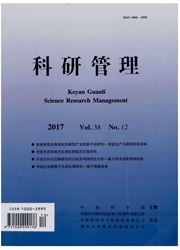

 中文摘要:
中文摘要:
随着中国经济国际化的加深,国际技术扩散成为了近年来研究的热门话题,然而各研究结果存在着多种矛盾的解释,笔者认为这主要是由于对模型结构转化和外溢时滞等影响导致模型和现实脱离所致。本文用普遍被采用的全要素生产率(TFP)模型,对中国1985—2007年的进口、出口、FDI和对外直接投资四种外溢渠道配合相关统计数据进行了分析。分析的结果除显示国内研发投入和FDI对于技术的进步具有显著的促进作用之外,也发现在分析的早期阶段由于中国在国际贸易中的设备引进和国际生产环节向中国转移特色,导致国际贸易因素对TFP的影响作用向国内研发转移,从而使前者表现为不显著而后者的影响作用被夸大,本文的结果还显示,现阶段对外投资的逆向知识获取效应不明显是效率损失的结果,而不能说明理论的失效。
 英文摘要:
英文摘要:
With the deepening of Chinese economics' internationalization, international technological diffuse has become a hot topic. There are various contradict explanations for different research results. The structure change of model and delay from spill- overs lead to that the model separates from practice. The common used Total Factor Productivity (TFP) model is applied to inspect the spillover effects of Chinese import, export, FDI, and Outward - Foreign Direct Investment(OFD) on TFP during a time span from the year of 1985 to 2007. The results show that both domestic R&D investment and FDI have remarkable effects, con- sisting with the results of former researches. Besides, they also indicate how the structure change of model has led to the import effects that are difficult to explain, and how the delay effect of spillovers has led to indistinct export results. Furthermore, the un- remarkable regression results of the inverse knowledge acquisition from abroad for OFDI are a result of efficiency lose, but are not the failure of the theory.
 同期刊论文项目
同期刊论文项目
 同项目期刊论文
同项目期刊论文
 期刊信息
期刊信息
